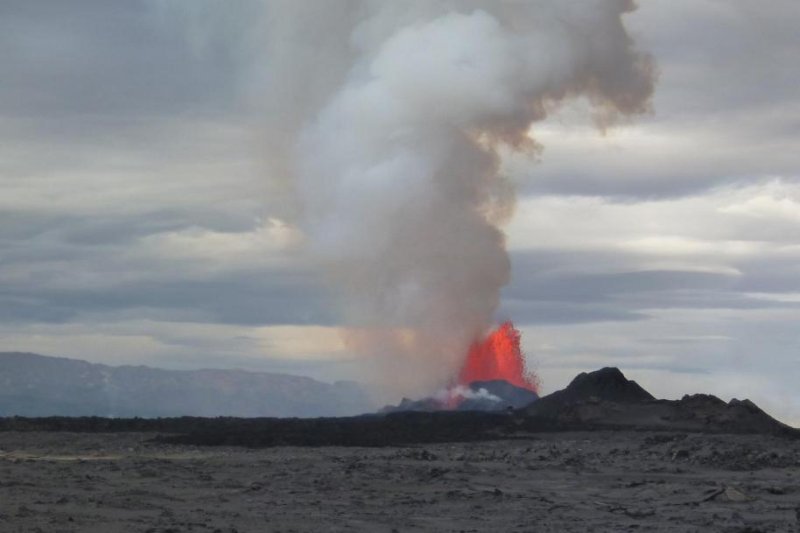Lava, gas and smoke streams from Bardarbunga. Photo by John Stevenson/Edinburgh
EDINBURGH, Scotland, Sept. 24 (UPI) -- In 2014, Iceland's Bardarbunga volcano spewed more than 130,000 tons of sulfur dioxide gas per day at the outset of its eruption.
The volcano spewed lava and fumes for six months; and though its toxic emissions slowed toward the end of its historic run, its total output was astounding.
According to a new study on the subject -- published in the Journal of Geophysical Research, Atmospheres -- the volcano's toxic emissions bested the average amount of sulfur dioxide produced by European industry, and by a large margin.
In 2010, Europe's industrial sulfur dioxide emissions totaled just 13,000 tons per day.
In total, Bardarbunga's output was three times that of all European industry combined. In the first several weeks of its eruption, the volcano was producing eight times as much sulfur dioxide.
"When the eruption ended, it had produced enough lava to cover an area the size of Manhattan," Anja Schmidt, an earth scientist at Leeds, said in a press release. "In the study, we were concerned with the quantity of sulphur dioxide emissions, with numbers that are equally astonishing."
Sulfur dioxide can cause acid rain and respiratory problems, but manmade emissions have been declining since the 1990s.
To see how Bardarbunga compared to European factories, researchers from the Universities of Leeds and Edinburgh, as well as the Met Office, used satellite data to map the volcano's expanding cloud of toxic gas.
"This eruption produced lava instead of ash, and so it didn't impact on flights -- but it did affect air quality, said John Stevenson, a researcher at Edinburgh's School of Geosciences. "These results help scientists predict where pollution from future eruptions will spread."















